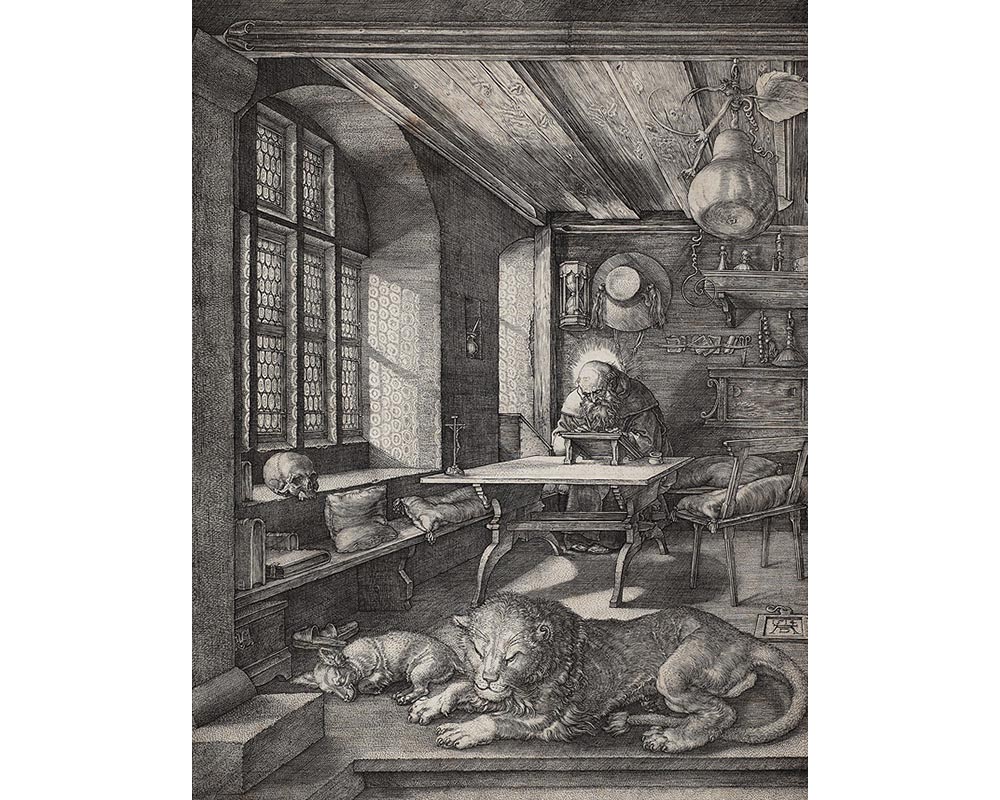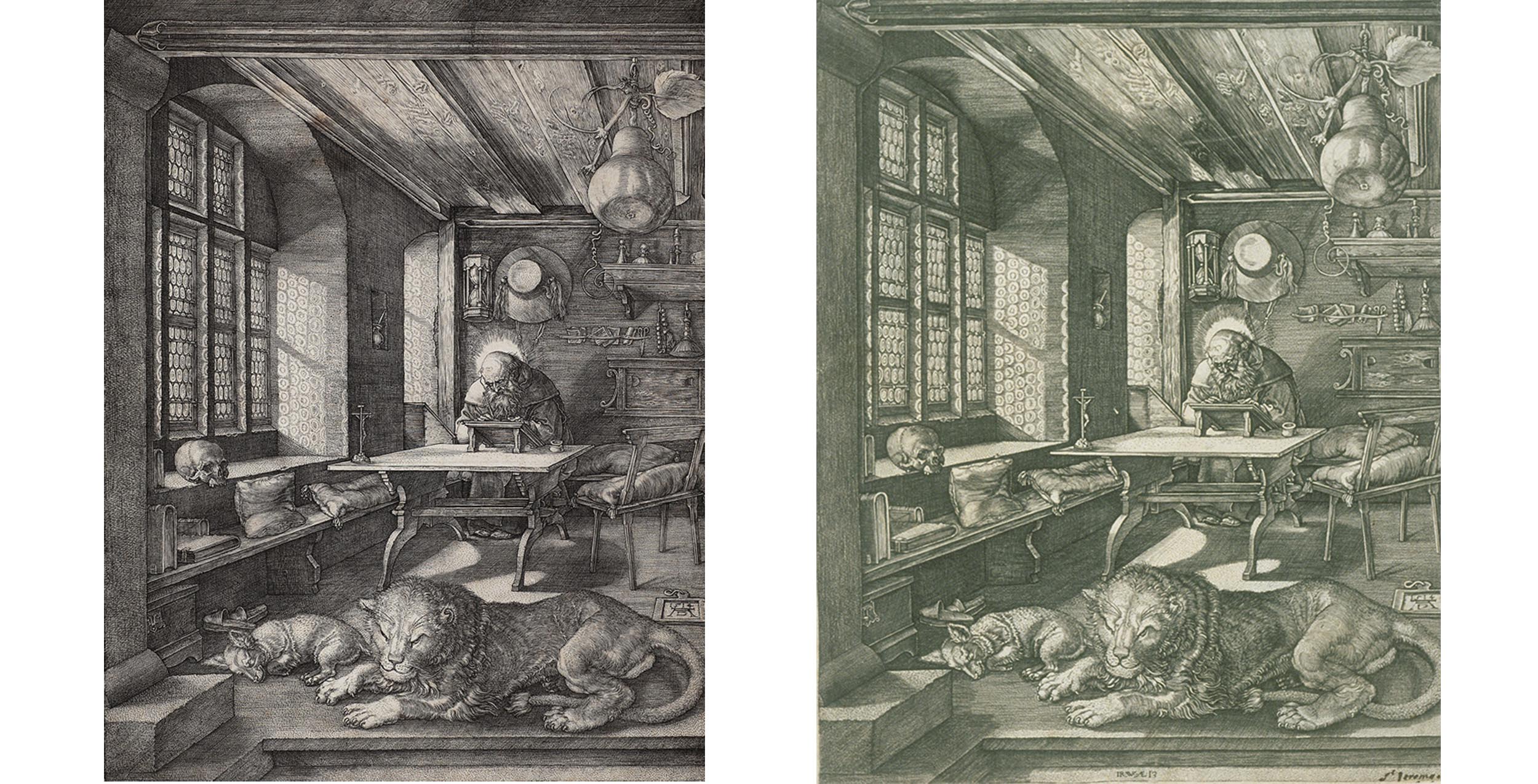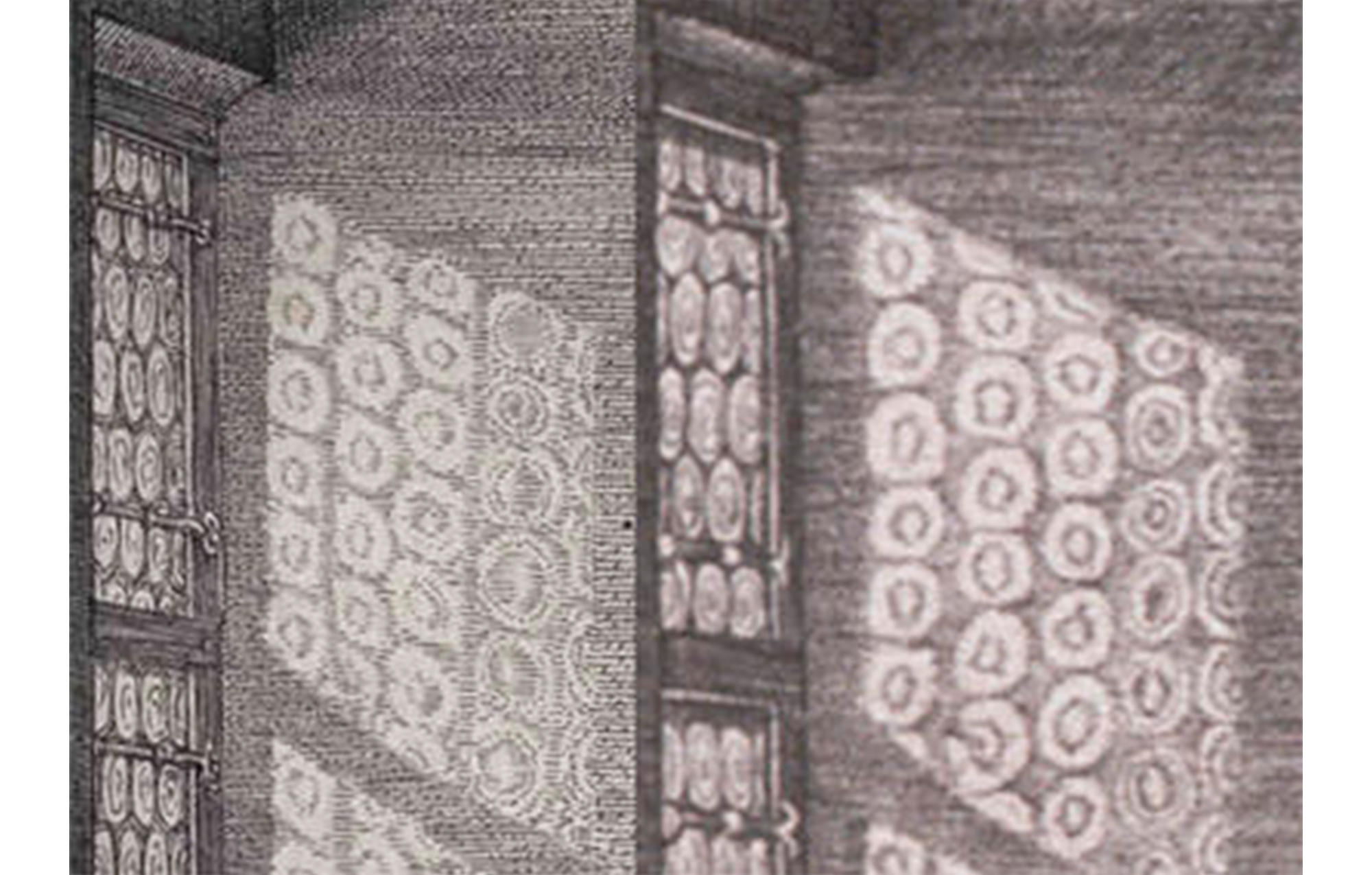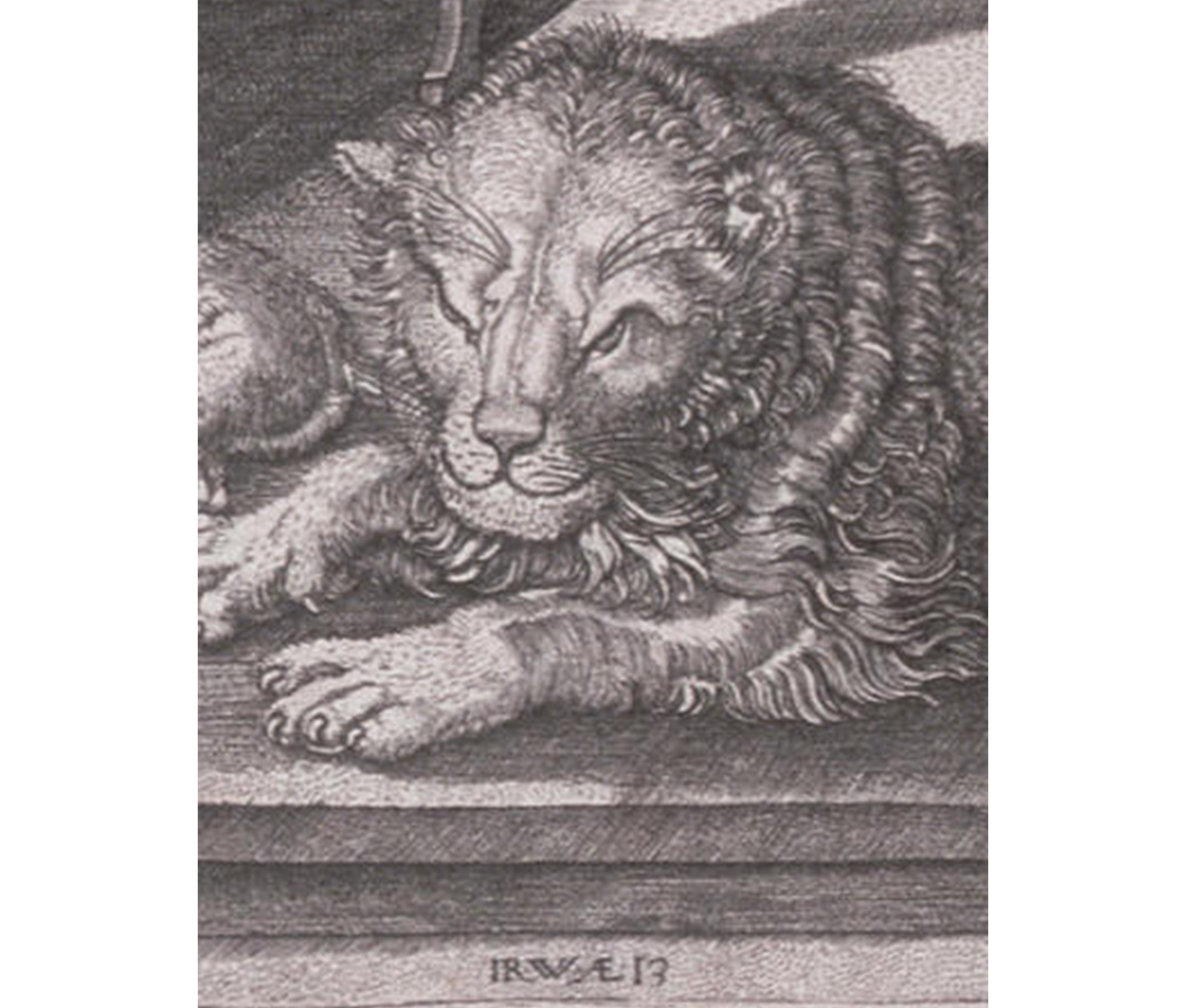
St. Jerome in his Study
Maggie Kurkoski is a member of the Smith College class of 2012 and the Brown Post-Baccalaureate Curatorial Fellow in the Cunningham Center.
Take a moment to examine these two prints.

Left: Albrecht Dürer. German, 1471–1528. St. Jerome in His Study, 1514. Engraving printed in black on antique laid paper. Bequest of Henry L. Seaver. Photography by Petegorsky/Gipe. SC 1976.54.48.
Right: Johan Wierix. Flemish, ca. 1549–after 1618. After Albrecht Dürer. German, 1471–1528. Saint Jerome in His Study, n.d. Engraving on paper. Gift of Mrs. Charles Lincoln Taylor (Margaret Rand Goldthwait, class of 1921). Photography by Petegorsky/Gipe. SC 1992.25.31.
The first piece is an engraving titled St. Jerome in his Study, by the German master, Albrecht Dürer. The second looks almost exactly the same – but it’s not. In fact, it’s an exact copy of Dürer’s work by Johan Wierix.
Despite his print’s remarkable similarity to Dürer’s own print, however, Johan Wierix was not attempting to trick anyone into mistaking his prints for Dürer’s actual work. Instead, his goal was much more innocuous – along with his brother Hieronymous, he was an apprentice learning how to engrave by copying a master’s work. Like other young apprentices in the large Antwerp Print houses during the mid-16th century, the Wierix brothers learned from an early age how to engrave and to use the burin to create technical masterpieces.
At the early ages of 12 and 16, respectively, Hieronymous and Johan could create technically perfect copies of the works of Dürer, and in the following centuries some unscrupulous dealers have even tried to pass off their work as originals. Careful examination reveals differences between the two, as you can see when you examine the window reflection below.

Comparison detail of window reflection, both Durer (left) and Wierix (right)
Although Wierix did his best to capture every detail, here his circles are not quite the same shape as those in the original. Art historians use records about these differences to identify prints and their makers accurately.
As Wierix had no intention of passing off his own work as one by Dürer, he did not hesitate in signing his own piece, making the work of the curator that much easier.

Detail of the signature of Johan Wierix